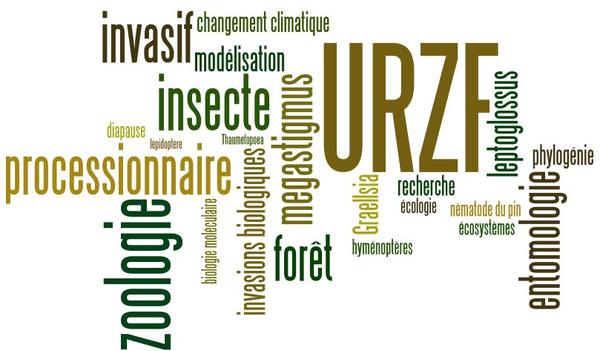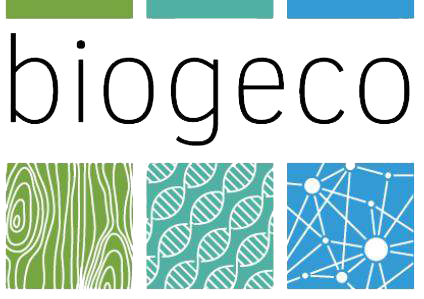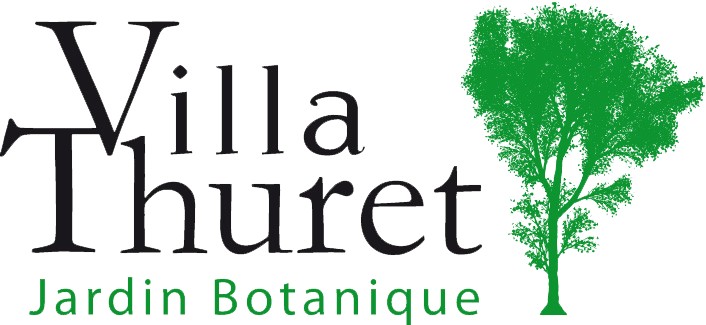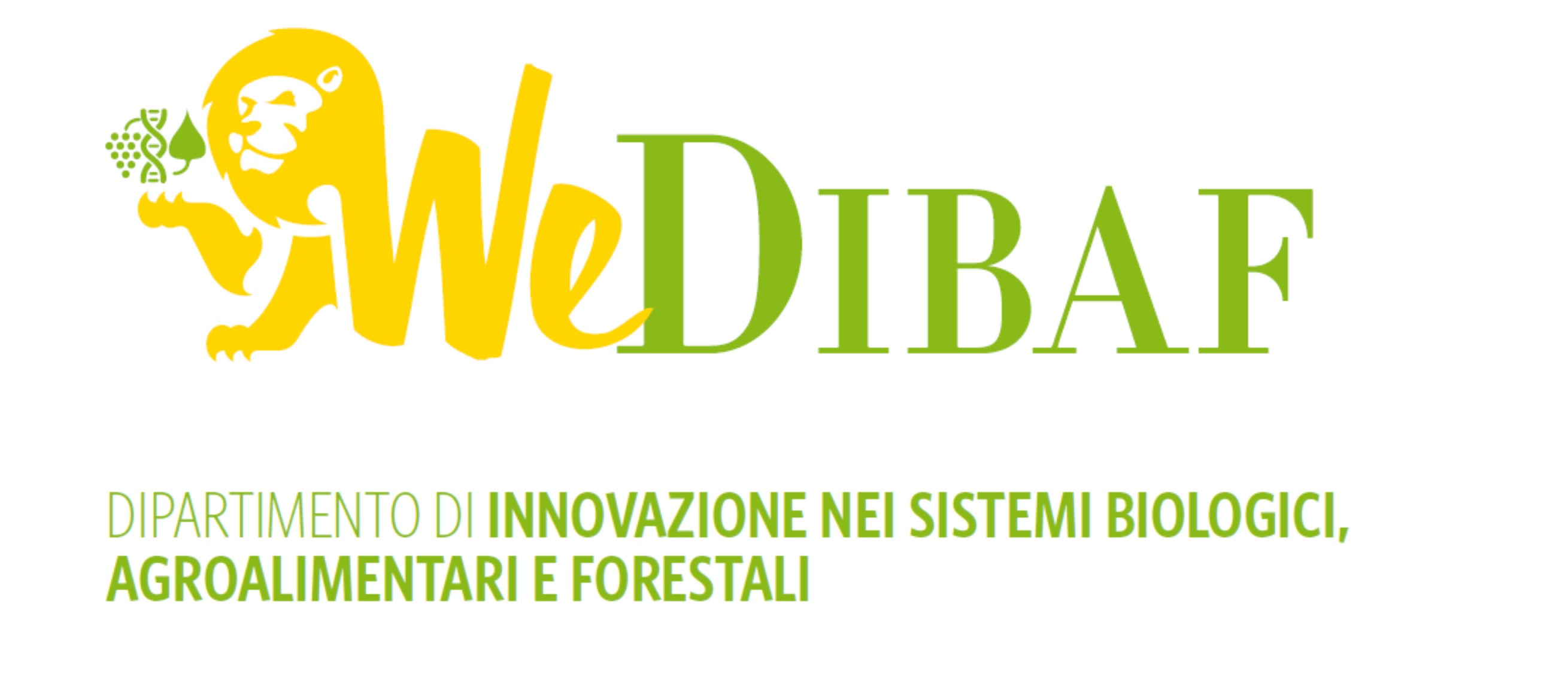

Here's a list of all the partners of SAMFIX project
Placed along the Tyrrhenian coast of southern Latium, about 100 km south of Rome, between Anzio and Terracina, the Circeo National Park covers about 8,500 hectares, all in the Province of Latina and in particular in the municipalities of Latina, Sabaudia, San Felice Circeo and Ponza (Isle of Zannone). Very diverse and mutually necessary environments coexist within the territory of Circeo National Park: dunes, wetlands, forest, promontory and the island of Zannone. Monitoring and research activities are the logical basis for habitat management practices in the National Park. Forest maintenance, wetlands management (especially water and hydraulic system management, including water pumping) and habitat restoration are included among the important management practices carried out in the area.Habitat restoration activities include dunal ecosystem management, with natural engeenering projects. Furthermore, the Park was involved in the important habitat restoration LIFE Project “Rewetland". The Forest, which was declared Biosphere Reserve in 1977 but is protected since 1934, represents the remaining part of a much larger forest drained during the 1930's. Today, it still represents not only a valuable example of forest and the “historical memory" of lost activities and ways of life, but also a true “reservoir" of biodiversity. Particular attention is paid here to the management of ungulate populations. On the Circeo Promontory there are several important natural environments, in particular the cliffs which are nesting sites for the Peregrine; and the Mediterranean scrublands in which the unique living autochthonous palm of Italy grows. Recently, the Plan of the Park was adopted by Regione lazio Board that probably represents the most important management tool ever developed for Circeo National Park. Circeo also organizes international conferences and workshops, as well as education and training activities. The museum of the visitor center hosts 15.000 visitors yearly.
Within SAMFIX, Circeo Park is responsible for project management and coordination and it will implement and manage the prevention, early warning, eradication and containment protocols in Circeo Park and surroundings. Moreover, it will provide cartographic and other site-based information for the X-Platform; engage stakeholders in Lazio; manage the socio-economic impact analyses; coordinate and implement communication, dissemination and networking activities; coordinate the Citizen Science promotion in the project areas and replication sites and implement it in and around the Circeo park with support of the local authorities of San Felice Circeo and Sabaudia.
Antibes Juan-les-Pins is located between Nice and Cannes and is the second city of the Alpes-Maritimes (80.000 inhabitants – more than 200.000 in summer). During the years, Antibes Juan-les-Pins has invested in the protection and conservation of the natural environment, also focusing on the transmission of ecological values to the young generations. On May 25th 1999, the City signed with the State, the first Environmental Charter of the Alpes-Maritimes, committing itsel in a vast program of conservation and preservation of the environment. Since ancient times, Antibes Juan-les-Pins has closely co-operated in conjunction with other municipalities all over the world, e. g. Denmark, Greece, Italy, United States, Germany, Ireland. On October 20th 2010, the city of Antibes Juan-les-Pins was designated as main operator for the Natura 2000 site “Baie and Cap d'Antibes – Iles de Lérins". It became the responsible for drafting its management plan in consultation with all the stakeholders and users of the territory. The territory of Antibes Juan-les-Pins has many natural spaces, such as parks, green spaces and gardens. The city manages about 120 ha of afforestation. Among these, Bois de la Garoupe represents an area of 10,2 ha located on the edge of the littoral. This site belongs to the Conservatoire du littoral from June 27th 1980 and is managed by the municipal services. It is located close to the Botanical Garden Villa Thuret, where Xylosandrus compactus was detected. As the wood hosts several species that are vulnerable to the insect, such as Quercus sp., the municipality is highly interested in a prevention and early warning strategy. To date, trapping campaigns are also being organized for Rhyncophorus ferrugineus.
Within the project, the Municipality of Antibes will collaborate with INRA in the engagement of stakeholders in and around Antibes; provide cartographic and other site-based information for the X-Platform; collaborate with INRA in the implementation and management of prevention, early warning, eradication in Bois de la Garoupe and surroundings; perform questionnaires for the socio-economic impact analyses; realise communication, dissemination and networking activities in and around Antibes; promote citizen scienze in Antibes with support of INRA Ville de la Thuret.
INRA (the French National Institute for Agricultural Research) is a public research organisation that focuses on issues related to agriculture, forestry, nutrition and food security, environment and land management and sustainable development. INRA ranks second in the world and first in Europe for publications in agriculture and forestry. The missions of INRA are to: (i) serve the public interest by maintaining a balance between excellence of research and the demands of society; (ii) produce and disseminate scientific knowledge and innovation, particularly in the fields of agriculture, forestry, food and environment; (iii) contribute to the expertise, training, promotion of scientific and technical culture and debate around science in society. Four units will intervene in the SAMFIX project:

The URZF unit (Orléans) studies the factors underlying the success of insect biological invasions, especially in forest ecosystems, and the impact of global warming on the populations of terrestrial invertebrates. URZF was involved in most of the FP6/FP7 projects related to invasions and climate change and related COST actions.
Within SAMFIX INRA-URZF will coordinate and participate in the development of the trapping protocol; provide scientific support and pictures to the X-platform; engage stakeholders in French project areas and develop training programmes for stakeholders; implement and manage the prevention, early warning, eradication and containment protocols in Antibes, Ile Ste Marguerite and Nice Côte d'Azur, with support of competent management bodies of each of the areas concerned and INRA-URFM; support the Push & pull protocol development and implementation in Circeo Park; boost with INRA-BIOGECO extension of the Prevention and early warning system to Port Cros National Park; analyse the most suitable host species occurring in Europe; and collaborate in the delivery of guidelines to support Pest and Pathway Risk Analysis. It will also perform communication, dissemination and networking activities.
 The BIOGECO unit (Bordeaux) focuses on biodiversity in forest ecosystems at different hierarchical levels, from genes to communities. The Forest Disease Ecology team investigates the dynamics of forest pathosystems, under natural evolution and in response to management and anthropogenic disturbance.
The BIOGECO unit (Bordeaux) focuses on biodiversity in forest ecosystems at different hierarchical levels, from genes to communities. The Forest Disease Ecology team investigates the dynamics of forest pathosystems, under natural evolution and in response to management and anthropogenic disturbance.
Within SAMFIX INRA-BIOGECO will participate in the preparation of protocols for the detection, identification and determination of pathogenicity assessment of alien fungi associated to Xylosandrus compactus and X. Crassiusculus; boost with INRA-URZF extension of the prevention and early warning system to Port Cros National Park; assess associated pathogenic fungi in natural and domesticated sites and collaborate in the delivery of guidelines to support Pest and Pathway Risk Analysis. It will also contribute to communication, dissemination and networking.

The URFM unit (Avignon) studies the dynamic and functional processes involved in the responses of Mediterranean forest to global change perturbations, including the ecology and the population dynamics of native and invasive forest insects.
Within SAMFIX INRA-URFM will participate in the development of the trapping protocol; develop training programmes for stakeholders; implement and manage the prevention, early warning, eradication and containment protocols in Antibes, Ile Ste Marguerite and Nice Côte d'Azur, with support of competent management bodies of each of the areas concerned and INRA-URZF; study introduction pathways and patterns of secondary expansion; assess repellency and attractivity effect of lures and collaborate in the delivery of guidelines to support Pest and Pathway Risk Analysis. It will also carry out communication, dissemination and networking activities.
 The UEVT experimental unit (Antibes) manages a botanic garden, Villa Thuret, belonging to the French State since 1878. This living laboratory harbours an exceptionally rich flora, acts as a plant biodiversity reservoir, and offers many opportunities for experiments on trees and associated insect fauna.
The UEVT experimental unit (Antibes) manages a botanic garden, Villa Thuret, belonging to the French State since 1878. This living laboratory harbours an exceptionally rich flora, acts as a plant biodiversity reservoir, and offers many opportunities for experiments on trees and associated insect fauna.
Within SAMFIX INRA-UEVT will engage stakeholders in French project areas supported by Antibes, Nice City, French National Forestry Office (ONF) and French National Forest Health Department (DSF) and offer them trainings. It will collaborate in the socio-economic impact assessment performing questionnaires in the French areas; manage and implement INRA’s communication, dissemination and networking activities; implement citizen science in Ile Ste Marguerite and Nice area and facilitates implementation in Antibes and Port Cros.
The Regional Direction Natural capital, parks and protected areas is a Direction of Regione Lazio, formerly ARP- Regional Parks Agency of Latium, in charge of networking, management support, public awareness, information, environmental education, training and research for Latium Region's parks, preserves and Natura 2000 sites. From 2001 to now it managed a lot of networking projects, aimed to develop in citizens of Latium Region awareness about goals and values of biodiversity and parks. In this framework the Direction organized more than 50 training courses for protected areas personnel in different matters as biodiversity monitoring and conservation, management, education, etc. The Direction has a wide experience in education, information and public awareness and participatory processes in park planning and management, and it organized many different activities like “Gens" education project, that involved in period 2001-2008 more than 30.000 young citizens all around the region in “junior ranger" activities formally part of school educational programs. Not less than 500 teachers where directly involved in ARP's training courses made together with park's rangers, to develop common educational programs. For what concerns invasive alien species in 2007 the Regional Parks Agency of Latium (ARP) launched a regional project (PASAL: “Project for an Alien Species Atlas of Latium”) aimed at preventing or mitigating the impacts of alien wildlife species to the biodiversity of Latium. During the project ARP staff built expertise and specific competences in the field of invasive alien species. Since 2010, ARP has started a collaboration with the Bern Convention – Council of Europe and IUCN SSC Invasive Species Specialist Group aimed to produce two important tools for facing biological invasions: “Code of conduct on Invasive Alien Species and Hunting” and the “European Guidelines on Protected Areas and Invasive Alien Species”, recently adopted by the Bern Convention.
Within SAMFIX Lazio Region will engage stakeholders in Lazio; support trainings and involvement of fitosanitary officials; extend the prevention and early warning system to 5 other parks in the Region, namely Natural Parks Riviera di Ulisse, Monti Aurunci; Monti Ausoni; Castelli Romani; and Natural Reserve of Tor Caldara; promote Citizen Science activities in these parks and perform communication and dissemination activities at regional level and at (inter)national level towards peer natural park authorities.
TERRASYSTEM s.r.l. (TS) is a Spin-Off company of the University of Tuscia, founded in 2004. TS realizes integrated projects/services of mapping, monitoring and predictive modelling through an integration of agrometeorological, remote sensing and GIS techniques, and web oriented geographic information systems on behalf of organizations, farms and agro-industries. TS main areas of business are: 1.Design, development and integration of sensors and networks for agro-environmental monitoring, with particular focus on IoT technologies; 2.Acquisition, processing and analysis of remote sensing data from aircraft / UAV / satellite; 3.Design and development of GIS, WebGIS and geographic databases, including cloud applications; 4.Integrated services for the agricultural and environmental monitoring and for the precision farming (DSS type), based on remote sensing, agro-meteorological sensors, modelling and geo-information technology. Well rooted in the field of the national and international research, TS collaborates with universities and research institutions in national and international projects in the development of sensors for environmental monitoring and data processing techniques. TS worked for: CNR IBIMET, ENEA, Universities of Viterbo, Firenze, Foggia, Palermo, Teramo and Salerno, University of Southampton (UK), Alterra (NL), University of Strasbourg (FR), Agriconsulting SpA, Litorale SpA, BIC Lazio SpA, SOGESID SpA, Iniziative Industriali Italiane SpA, Stelliferi & Itavex SpA, Within Assofrutti Srl, Unisky Srl, Antinori Agricola, Mezzacorona, Ruffino, Avignonesi, Frescobaldi, ANICAV, etc. Finally, TS participates with a share of 10% in UNISKY, a Spin-Off of IUAV, University of Venice (Italy). TS has 6 employees with a high technical and scientific education level in agriculture and engineering, and relies on a network of collaborators highly specialized in the fields of geomatics, machine learning and information technology.
Within SAMFIX Terrasystem will develop the experimental i-X-Traps; develop and manage the X-platform and related Apps; provide remote sensing data; coordinate the monitoring and measurement of the performance indicators; coordinate citizen science engagement plans and develop gamification; engage in dissemination and networking activities.
The University of Alicante (UA), was created in 1979. Today it educates more than 20,000 students –plus 3,000 internationals- and offers 43 undergraduate and 80 postgraduate programmes: consequently it is one of the fastest growing universities in Spain. UA employs over 3.500 researchers and 227 research groups and management staff (44%women), which involves an annual budget of 200 million Euros. It includes 6 Faculties, 1 Polytechnic School, 1 Doctoral School, and 15 Research Institutes. Currently UA is investing near to 34M Euros for boosting frontier research and technology transfer processes via spin off, licensing and international promotion mainly. In 2015 the University generated an income of nearly 14.8 million Euros from funded research projects on a National, Regional, European and private level. UA provides grant support to their researchers via its International Project Management Office (OGPI), which managed the IPR-Helpdesk project during 9 years (until 2010) and the Regional Node of Enterprise Europe Network for 13 years from now. UA has successfully acted as coordinator of many Tempus, Alfa, Edulink, Lifelong Learning, DG Justice, LIFE and Framework Programme (FP) Projects. Recently, UA participated in several FP projects (25 FP5, 24 FP6 and 48 FP7 projects – 13 of them coordinated by UA) and 23 projects in H2020 (2 coordinated by UA). The scientific team focuses their research on the study of Natural Parks management, applied to the ecosystem preservation and restoration, including invasive species control, land degradation and desertification, ecosystem responses to wildfires, and dryland restoration. Recently, UA focused on applied investigation in forest insects management, as well as the study of insects-trees relations and invasive forest insects. UA has a wide experience in the study of diversity, biology and functional ecology of xylophagous beetles in Mediterranean Ecosystems.
Within SAMFIX University of Alicante will collaborate in the development of the trapping protocol; provide scientific support and pictures for the X-platform and provide with support of the Forest Health Department (FHD) of Generalitat Valenciana cartographic and other site-based information. It will engage stakeholders in Valencia, supported by the FHD, and offer trainings; and implement and manage the prevention, early warning, eradication and containment protocols in El Tello and surroundings. Herewith, the FHD supports UA in supervision, advising, and reinforcement of monitoring and surveillance and in the replenishment of traps; while the Department of Agriculture, Environment,Climate Change and Rural Development implements needed eradication or contingency measures and its phytosanitary inspectors, in the framework of their mandate, inspect nurseries and orchards and apply quarantine measures if needed. UA will also boost extension of the prevention and early warning protocols to Sierras de Martés y el Ave and Muela de Cortes y el Caroche, with support of the FHD. It collaborates in the analysis of the most suitable host species occurring in Europe and in the assessment of repellency and attractivity effect of lures; provide samples to INRA for the study of introduction pathways and patterns of secondary expansion; and collaborate in the delivery of guidelines to support Pest and Pathway Risk Analysis. For the socio-economic impact analysis UA will perform questionnaires in Spanish areas, it will perform communication, dissemination and networking activities and promote citizen science in the Spanish areas. Lastly, it is responsible for coordination of the activities regarding ecosystem functions, developing inventories and their thematic cartography of ecosystem services and functions; defining the xylophagous and pollinators community; evaluating ecosystem service losses and social perception of changes in the natural areas and performing an experimental restoration of affected specimens.
The Department for Innovation in Biological Agro-food and Forest Systems of University of Tuscia (UNITUS-DIBAF) joins together more than 60 scientific staff spanning most of the aspects of Environmental Sciences. DIBAF specific targets include Scientific and Technological innovation and transfer in the fields of agriculture and forestry, environmental processes, sustainable management of environmental resources. DIBAF is a leader institution in Italy for advanced in research in Environmental sciences with a solid participation to international research and consulting networks including cooperation activities (EU, ICCP; IUFRO; COST; FAO; WWF; WorldBank). DIBAF has stable collaboration with national, regional and local authorities for the implementation of new technologies and products together with SME’s, association of producers and NGO’s. DIBAF-UNITUS has extensive experience in high education and research on forestry and agriculture, including Plant protection and it is considered among the excellences for Forestry and Agriculture research in Italy. The Laboratory of Plant Protection is particularly skilled in pests diagnostics, epidemiology, population phylogeny and integrated and biological control of plant pests with a particular interest in forest pests. The Laboratory has been involved by Circeo Park in the survey that was conducted in 2016 to evaluate symptoms and damage on different plant species in the Quarto Freddo area and in the analyses of samples that led to the detection of Xylosandrus compactus. The Laboratories of Forest Ecophysiology has developed a large experience in the fields of tree and forest ecophysiology, forest-atmosphere exchanges, plant-soil interactions, impacts of climate changes and forest management on productivity and ecological processes of native forest ecosystems and plantations forestry. In the last 25 years, the lab actively participated to European RTD programmes, as well as to the International ones (FAO & other UN agencies).
Innovation through development of new technologies and methodologies for a sustainable agriculture and forestry is the strategy that underpins research activities in Plant Protection at DIBAF. Undergraduate, Graduate in Forestry and Agriculture and PhD programs are active at DIBAF.
UNITUS-DAFNE Department of Agriculture and Forest Science covers the research areas of agricultural and environmental sciences, agricultural biotechnology,
forestry and natural sciences, and forestry conservation and restoration. The DAFNE Department’s academic staff (about 50 people) teach and research a wide range of themes and topics, covering agriculture, forest and natural sciences and agro-food biotechnology. Department’s researchers and professors are supported by technical and administrative staff (about 30 people), and may rely on cutting-edge laboratories and on a modern agroforestry teaching / experimental / demonstrative farm. In 2017, the quality of research at DAFNE placed the department on a top list of 120 Italian Departments of Excellence. This achievement will allow the DAFNE to get government extrafunding over the next 5 years which will be invested to carry out a project of research and teaching improvement entitled “Sustainability of Mediterranean agricultural and forest systems in the context of global change” (SAFE-Med). The DAFNE entomology team has carried out in the last twenty years, studies on forest insect populations pestsof the chestnut. The research carried out has allowed the identification of several invasive insects (as defined by EPPO), the correct knowledge of the biology of key forest insect pests of chestnut and their insect predators and parasitoids. The studies also allowed the formulation of management strategies for low or zero environmental impact of biotic factors that tend to cause the imbalance of forest ecosystems.
Within SAMFIX, UNITUS-DIBAF and DAFNE will collaborate in the development of the trapping protocol; provide scientific support and pictures for the X-platform; and develop and offer training programmes for stakeholders. DIBAF will prepare with support of INRA-BIOGECO protocols for the detection, identification and determination of pathogenicity assessment of alien fungi associated to Xylosandrus compactus and X. Crassiusculus; Both will support Circeo Park in the implementation and management of prevention, early warning, eradication and containment protocols and support trainings for staff of Lazio parks to which the protocols will be extended. They will collaborate with INRA in the analysis of the most suitable host species occurring in Europe and of the introduction pathways and patterns of secondary expansion; and in the assessment of repellency and attractivity effect of lures. DIBAF coordinates the assessment of associated pathogenic fungi in natural and domesticated sites and the delivery of guidelines to support Pest and Pathway Risk Analysis. UNITUS-DIBAF will provide for Circeo sampling and analyses to contribute to the definition of the xylophagous and pollinators community and the evaluation of ecosystem service losses. It will furthermore evaluate a) the site specific changes induced by Xylosandrus compactus and X. crassiusculus on the main ecosystem processes providing the services on a larger scale and b) the site specific changes induced by the project’s activities on these processes. Lastly, UNITUS departments will engage in communication, dissemination and networking activities and will deliver an educational pack in the framework of the citizen science.

![]()